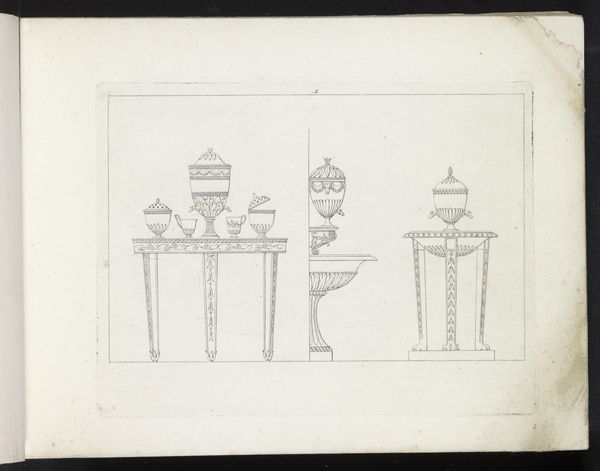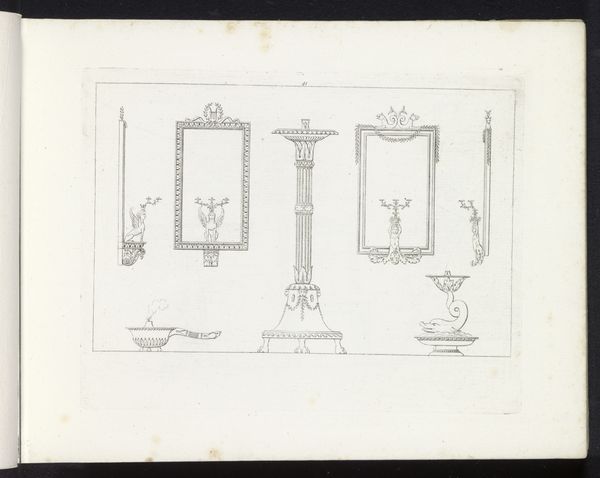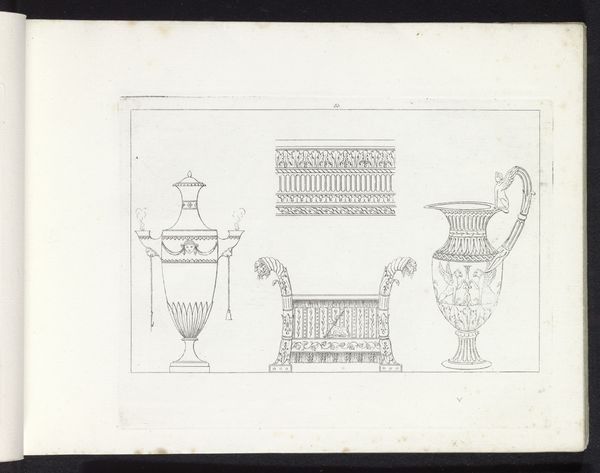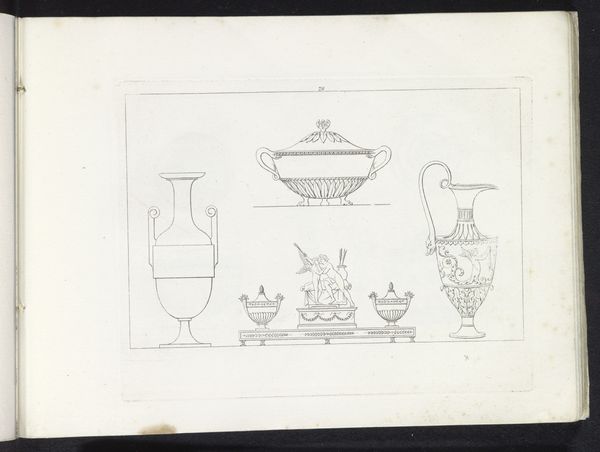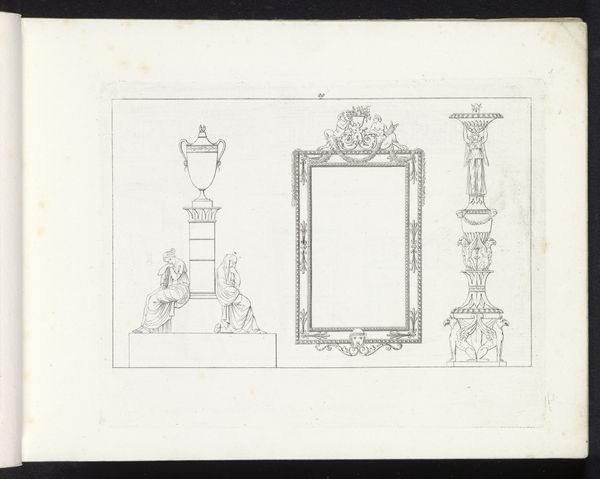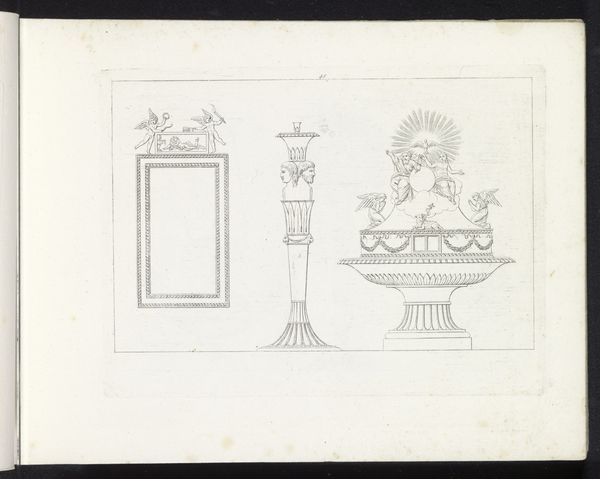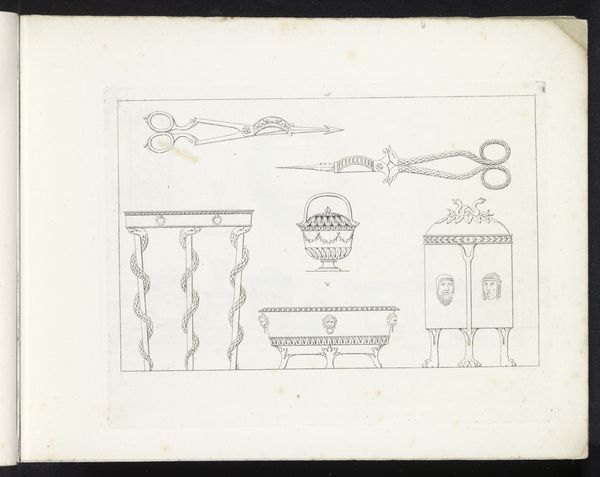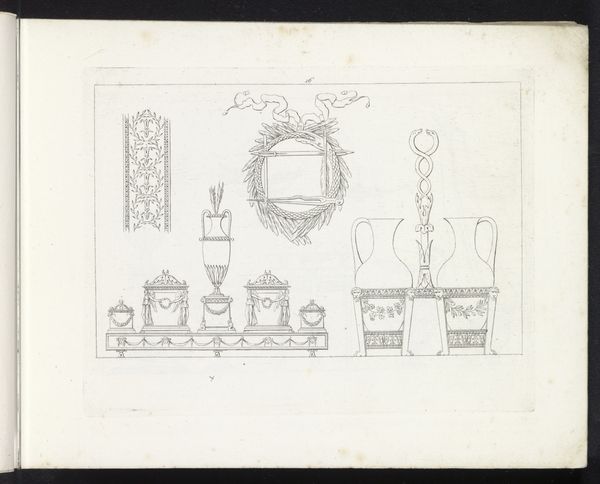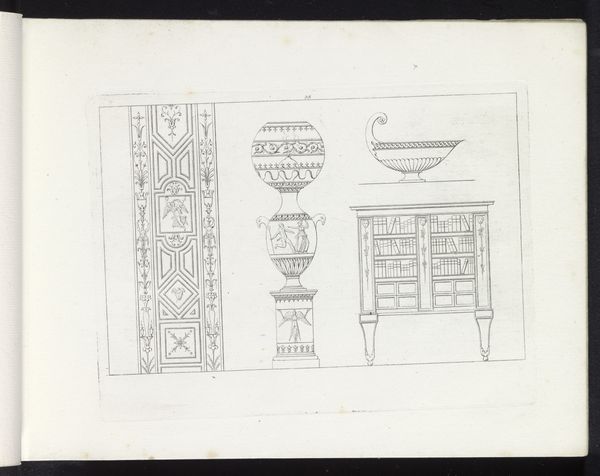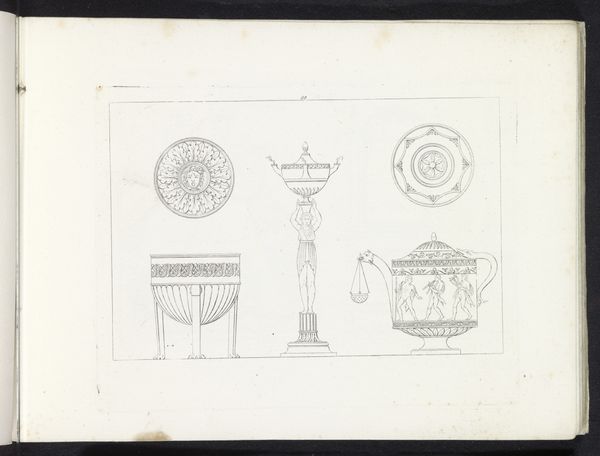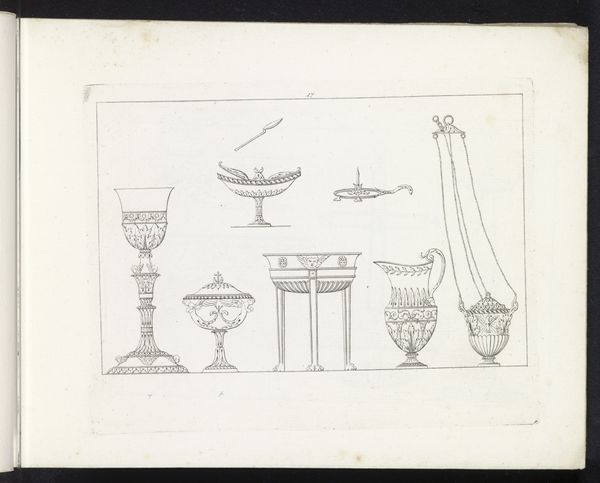
drawing, ink
#
drawing
#
neoclacissism
#
ink
#
geometric
#
line
Dimensions: height 165 mm, width 216 mm
Copyright: Rijks Museum: Open Domain
Editor: So, this ink drawing from 1817 by Pietro Ruga is titled "Oliebrander, kast en kan" which translates to "Oil burner, cabinet and can." It features line drawings of these three objects, very geometric and precise. I find its austerity intriguing, almost cold. How do you interpret this work, especially given the time it was created? Curator: Well, let’s think about Neoclassicism, the art movement Ruga was part of. It wasn't just about aesthetics; it was deeply intertwined with the socio-political climate. The rigid lines and idealized forms, the references to antiquity—it’s all a reaction to the perceived decadence of the preceding eras. Editor: So, the “coldness” I sense isn't accidental? Curator: Precisely. These objects, rendered with such exactitude, are meant to evoke order, reason, and stability, values that were particularly appealing after the French Revolution. The domestic setting here feels staged, like a performance of order in the face of potential chaos. Where do we place this type of 'order' in our modern, late-stage capitalistic lives? Does its purpose hold or is it merely aesthetic now? Editor: That's fascinating. I hadn't considered the political implications so explicitly. So, the very choice of depicting these domestic objects in such a formal way becomes a statement? Curator: Exactly! It suggests a desire to impose control and rationality onto the domestic sphere. What might be the effect of the scale of these items--could this communicate something? How does this drawing play into the larger narrative of power, gender, and the idealization of domestic life in the 19th century? Editor: Thinking about it now, it is a bit strange that items like these were displayed as opposed to human likeness or depictions of heroism as common throughout history...Thanks, I will have to rethink the symbolism I once found common-place! Curator: Of course. Thinking about Art isn't just 'beauty' as a static item, it is the ongoing dialogue of history with ourselves and the greater political contexts which inform them.
Comments
No comments
Be the first to comment and join the conversation on the ultimate creative platform.
